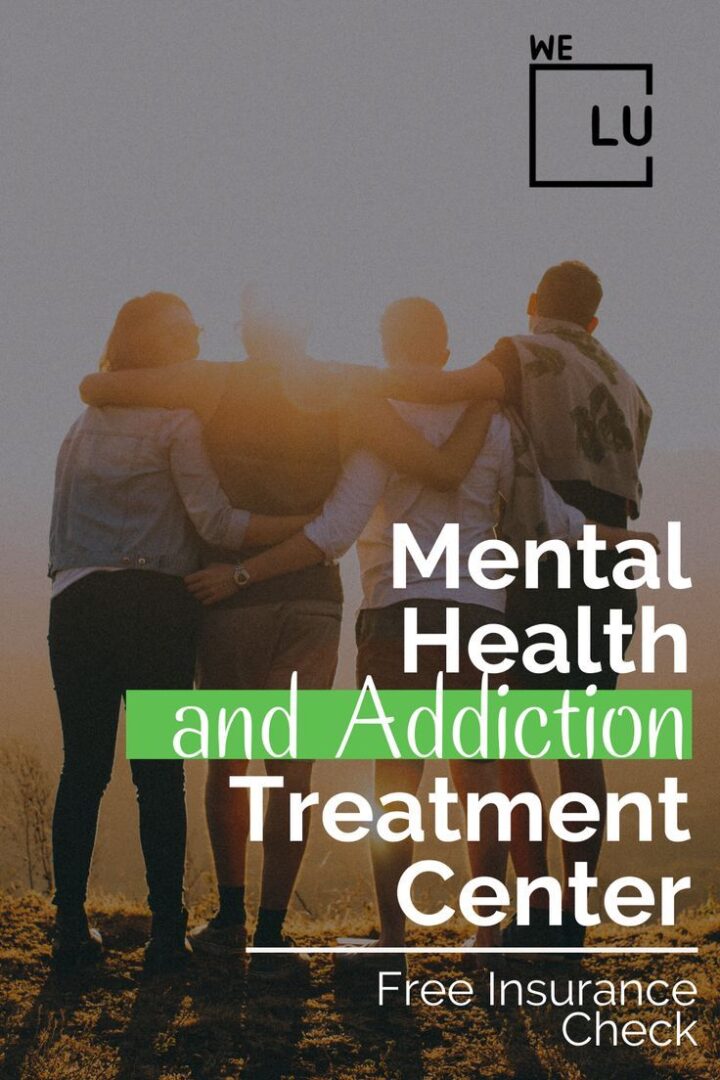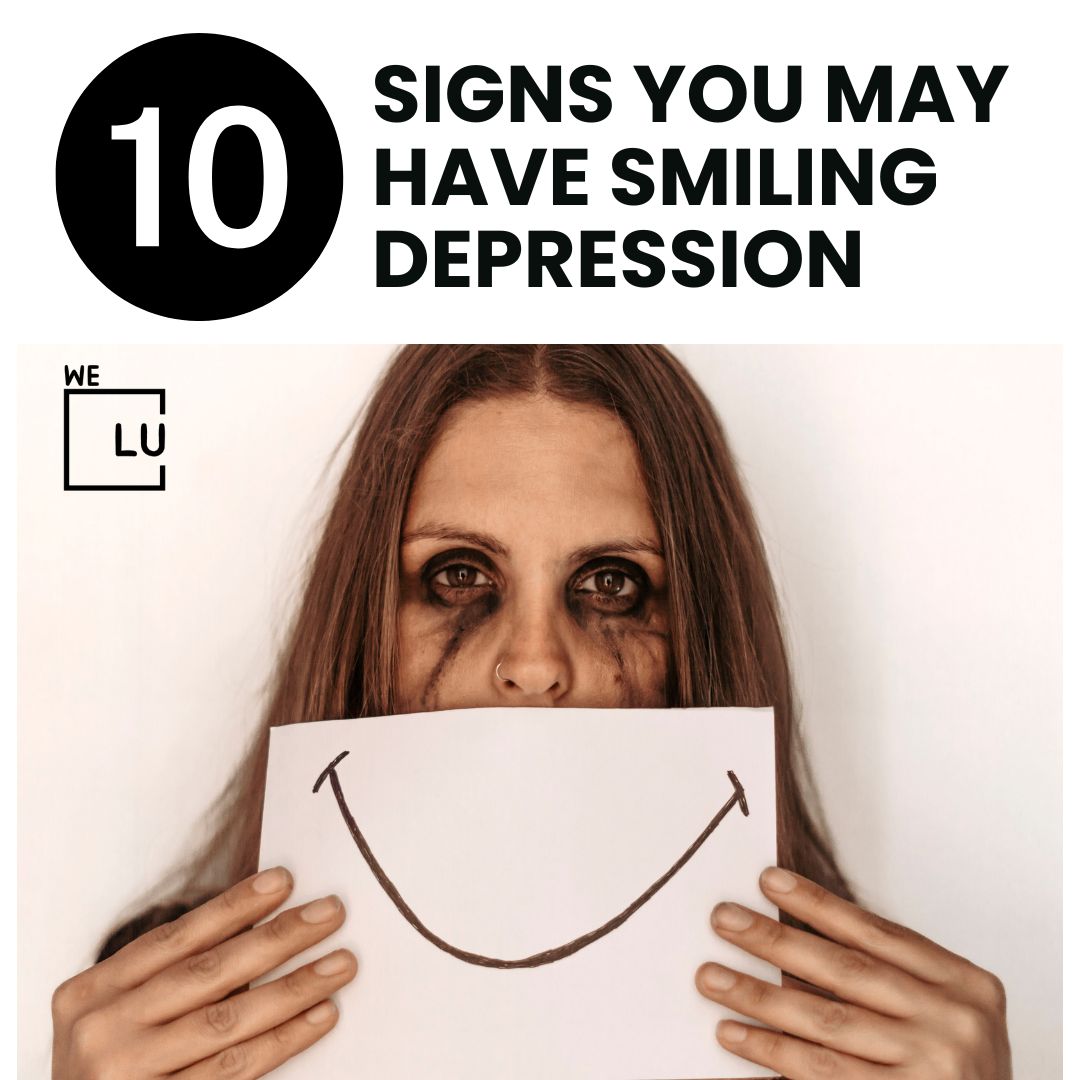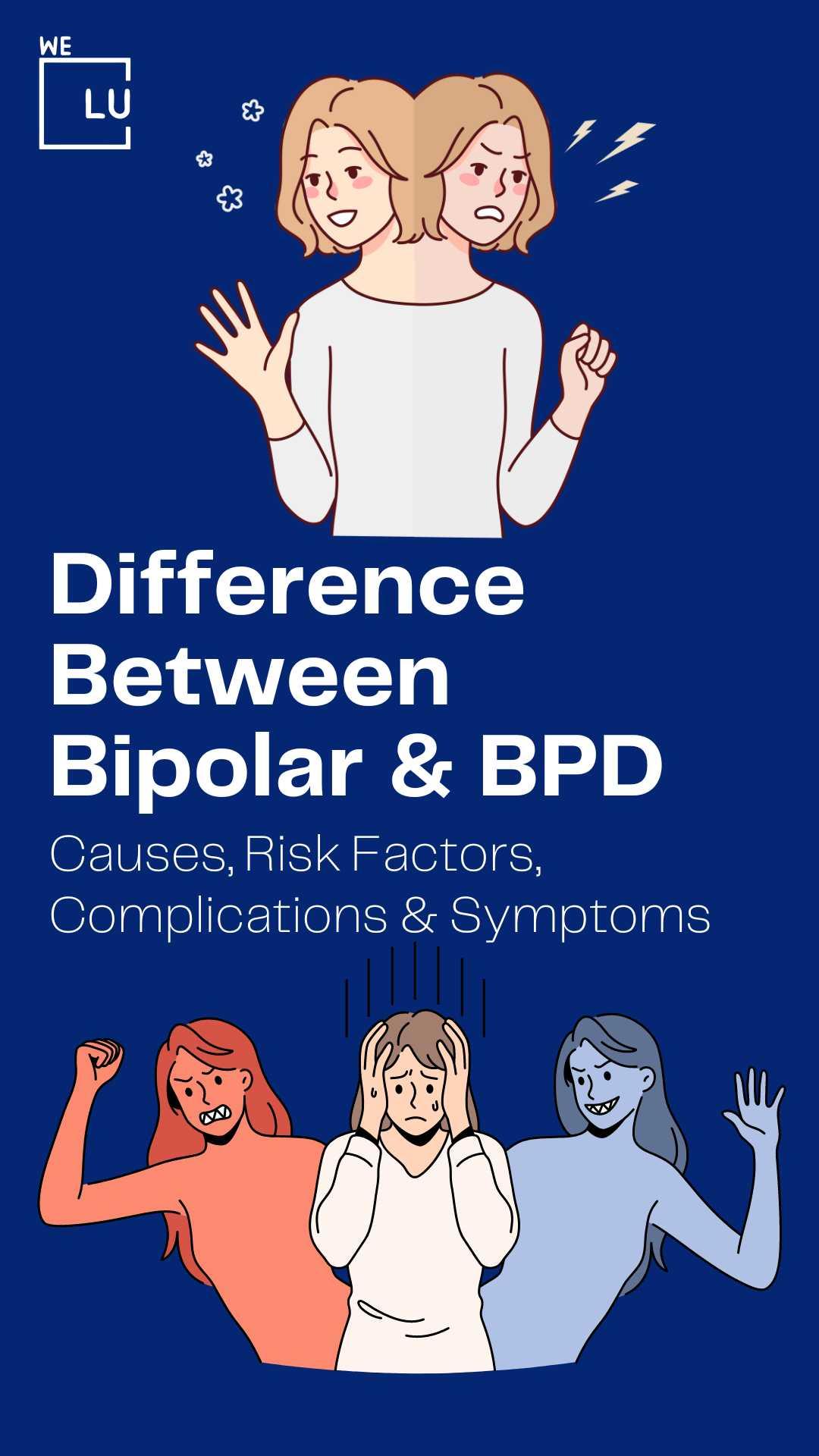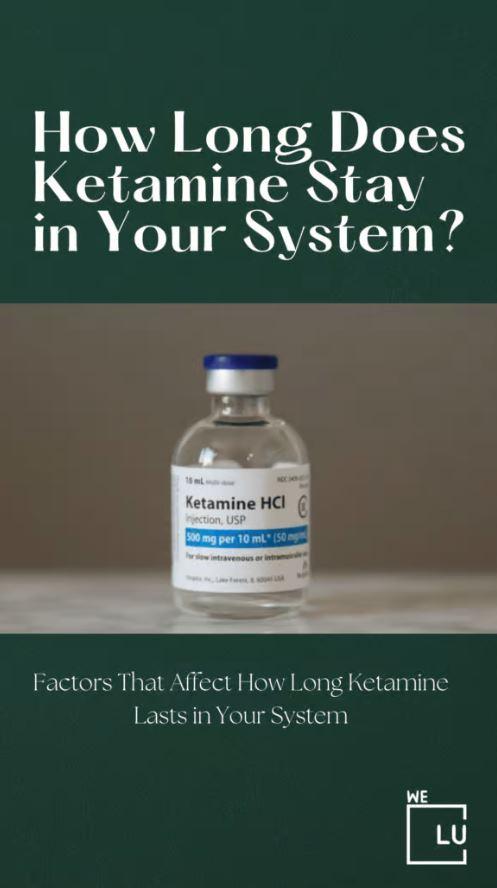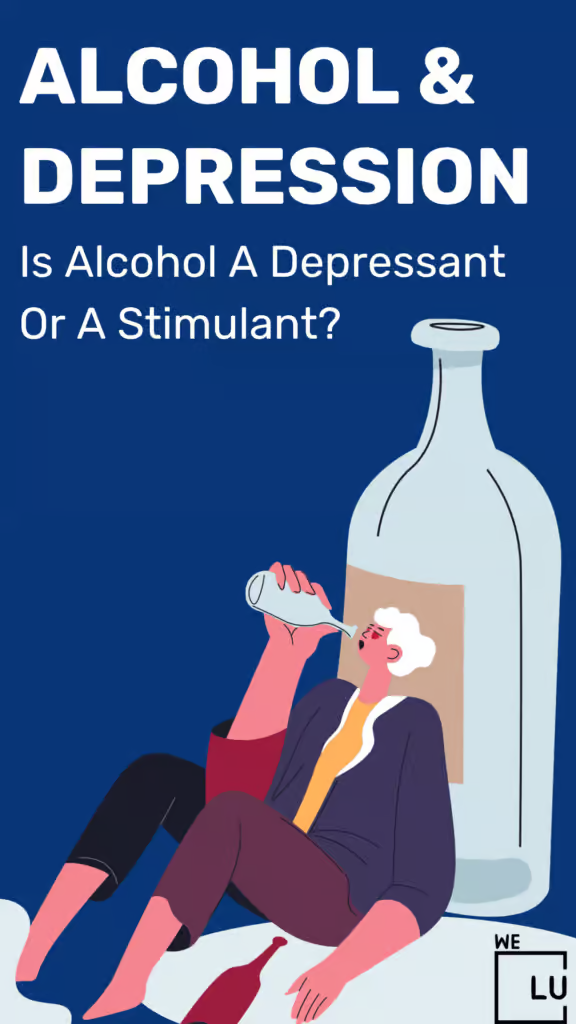What is BPD?
People with borderline personality disorder (BPD) find it challenging to handle feelings of rejection, and this difficulty can impact their relationships, how they see themselves, and how they express their emotions and behave. The NIH Surveys have estimated the prevalence of this disorder and the BPD treatment to be 20% in the inpatient psychiatric population. [1]
BPD and Addiction Link
According to research published by the US NCBI PubMed, borderline personality disorder (BPD) affects 2.7% of adults. About 78% of adults with BPD also develop a substance-related disorder or addiction at some time in their lives. [2] These individuals are more impulsive and clinically less stable than BPD patients without substance dependency. They display suicidal behavior to a greater extent, drop out of treatment more often, and have shorter abstinence phases. The combination of addiction and BPD treatment requires a unique therapeutic approach.
BPD Treatment Options
BPD is primarily treated with psychotherapy. The three proven therapies that work well for individuals with this disorder are:
- Mentalizing-Based Therapy (MBT): It helps patients manage emotion dysregulation by feeling understood, allowing them to be more curious and make fewer assumptions about the intentions of the people around them.
- Dialectical behavior therapy (DBT): DBT combines mindfulness practices with concrete interpersonal and emotion regulation skills.
- Transference-focused Psychotherapy (TFP): This type of therapy uses the patient-therapist relationship to develop the patient’s awareness of problematic interpersonal dynamics.
MBT and DBT each involve individual and group treatment over 12 to 18 months. [3]
DBT is an established psychotherapy based on the theory that BPD arises when emotionally vulnerable individuals grow up in an environment that is invalidating or dysfunctional. It is designed to help individuals accept themselves and develop skills for change. Typically, a 12-month program involves five components:
- Group skills training to introduce effective and practical skills that can replace other negative behaviors used to respond to emotional distress.
- Individual psychotherapy helps individuals set and meet goals, be motivated, and apply their practical skills.
- Telephone coaching to provide in-the-moment support when people with BPD experience distress and help them with applying their DBT skills.
- Case management strategies empower individuals to control their lives and care.
- The DBT consultation team helps therapists stay motivated and competent to avoid burnout and share knowledge to provide the best treatment possible.
DBT is used with people living with BPD as well as people living with PTSD, substance use disorders, suicidal behavior, and self-harm.
BPD Medications
No medications are FDA-approved for the treatment of borderline personality disorder.
According to research in the US NCBI PubMed Journal Review, overprescription of off‐label medicines is common in patients with BPD. Nearly three-quarters of patients with BPD were taking antidepressants, 55% benzodiazepines, 40% mood stabilizers, and 35% antipsychotics. [4]
The risks of medication use in BPD include:
- Interactions with substances of abuse.
- Addiction potential.
- Increased risk of suicidal tendencies and disinhibition.
- Severe side effects.
- A high risk for self‐injury with pills.
- Psychological risks such as diverting attention and energy from psychotherapeutic aims, thus altering the effectiveness of psychotherapy.
Consult your doctor if you’re considering taking any medications. They may ask about your symptoms and how they affect your quality of life and may guide you with the proper prescription.
BPD Symptoms
People with BPD may experience intense mood swings and feel uncertainty about how they see themselves. Their feelings for others can change quickly and swing from extreme closeness to dislike. They also tend to view things in extremes, such as all good or bad. Their interests and values can change quickly, and they may act impulsively or recklessly. [5] Other most common symptoms include:
- Intense fear of abandonment.
- Unstable and extreme relationships.
- Uncertain self-image.
- Impulsive and risky behaviors.
- Recurrent suicidal thoughts or self-harming behaviors.
- Extreme mood swings.
- Chronic feelings of emptiness.
- Difficulty controlling anger.
- Paranoia and dissociation.
- Intense and unstable sense of identity.
What are the Risk Factors for BPD?
The NIMH Studies suggest that genetic, environmental, and social factors may increase the likelihood of developing borderline personality disorder. [6] These factors may include:
- Family history of BPD or other mental health disorders.
- Childhood trauma or abuse.
- Neglect during childhood.
- Unstable family environment.
- Genetic predisposition.
- Brain abnormalities or dysfunction.
- Being female (BPD is diagnosed more frequently in women than men).
- Personal history of mood disorders or substance abuse.
- Impulsivity and emotional reactivity in temperament.
- Peer or social influences during adolescence.
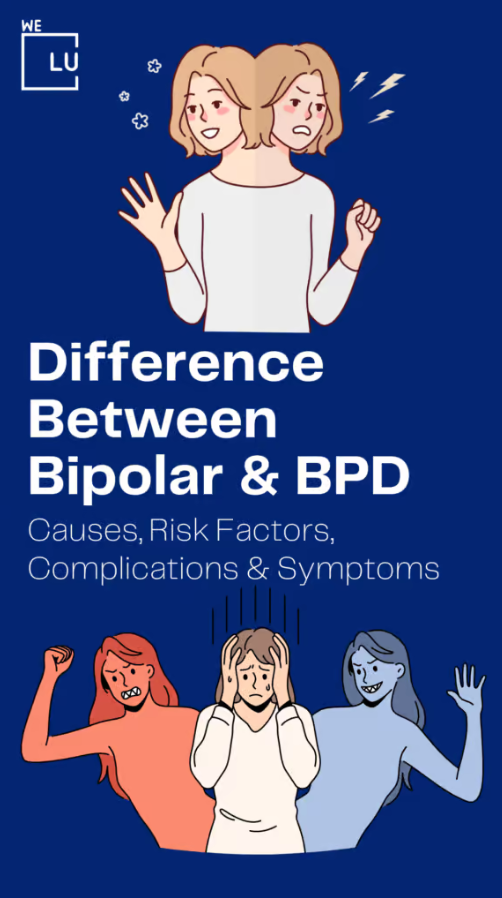
BPD vs Bipolar Disorder
BPD and bipolar disorder are often confused because they both involve mood swings. However, they’re different in so many ways. To put it simply:
| Criteria | Borderline Personality Disorder (BPD) | Bipolar Disorder |
|---|---|---|
| Mood Swings | Intense and rapid, often in response to interpersonal stressors | Distinct episodes of mania and depression, lasting for days to weeks |
| Manic Episodes | Not a characteristic feature | Present, marked by elevated mood, increased energy, and impulsivity |
| Depressive Episodes | Present, but less distinct and may be triggered by interpersonal issues | Clearly defined episodes of profound sadness and low energy |
| Relationships | Intense fear of abandonment, unstable and stormy relationships | Fluctuations in relationships, but not as marked by the intense fear of abandonment seen in BPD |
| Self-Image | Unstable self-image and identity | Generally stable self-image, with changes during manic and depressive episodes |
| Duration of Mood Changes | Mood shifts may happen within hours or days | Distinct episodes lasting days to weeks |
| Treatment Approach | Dialectical Behavior Therapy (DBT), psychotherapy | Mood stabilizers, psychotherapy, and sometimes antipsychotic medications |
Skip To:
Learn More:
Get Help. Get Better. Get Your Life Back.
Searching for Accredited Drug and Alcohol Rehab Centers Near You? We Level Up Texas Is Opening Soon!
Even if you have failed previously and relapsed, or are in the middle of a difficult crisis, we stand ready to support you. Our trusted behavioral health specialists will not give up on you. When you feel ready or just want someone to speak to about therapy alternatives to change your life call us. Even if we cannot assist you, we will lead you to wherever you can get support. There is no obligation. Call our network hotline today.
FREE Addiction Hotline – Call 24/7
What Causes BPD Splitting?
To split something means to divide it. Those with BPD tend to distinguish themselves, other people, and situations in black and white, with no middle ground. It happens because of difficulties in handling mixed feelings. A person with BPD might switch between seeing someone as all good or bad without recognizing the shades in between. Their emotions paint everything in bright colors or deep shadows, making it hard to see the gray areas. [7]
What is Quiet BPD?
Quiet borderline personality disorder, also known as “high-functioning” BPD, means you often keep your intense thoughts and feelings inside rather than express them outwardly.
The NIMH Study reveals that males with BPD were characterized by explosive temperaments as well as high levels of novelty seeking and harm avoidance. In contrast, high levels of harm avoidance described the symptoms of BPD in females but not novelty seeking.
Although women with BPD tend to be quieter, they are more likely to experience eating, mood, anxiety, and posttraumatic stress disorders. [8]
Do I Have BPD?
Even if there are some online self-assessment BPD quizzes, they shouldn’t be used in place of a professional diagnosis. It is recommended to get a BPD test and assistance from a competent psychologist, psychiatrist, or mental health professional if you think you have borderline personality disorder (BPD) or are having mental health issues.
Is It Okay to Have a BPD Favorite Person?
It’s okay to have a favorite person; we usually call them best friends, but in the context of BPD, it’s essential to manage the intensity of the emotional attachment. Recognizing and understanding the relationship’s dynamics can help maintain healthier boundaries and prevent excessive emotional dependence. Seeking support from mental health professionals can also guide managing relationships in a beneficial way for both parties. [9]
Opening Soon! First-Class Facilities & Amenities
World-Class High-Quality Addiction & Mental Health Rehabilitation Treatment
Coming Soon! Rehab Centers TourRenowned Addiction Centers. Serene Private Facilities. Inpatient Rehab Programs Vary.
FREE Addiction Hotline – Call 24/7Proven recovery success experience, backed by a Team with History of:
- 15+ Years Experience
- 100s of 5-Star Reviews
- 10K+ Recovery Successes
- Low Patient to Therapist Ratio
- Onsite Medical Detox Center
- Comprehensive Dual-Diagnosis Treatment
- Complimentary Family & Alumni Programs
- Coaching, Recovery & Personal Development Events
We Level Up Texas Dual Diagnosis Rehab Center (Opening Soon!)
Drug abuse is dangerous if you have BPD, as certain drugs can cause psychotic episodes. Treating dual diagnosis with borderline personality disorder is critical. It’s not just about figuring out why someone might use substances like drugs but also about fixing chemical imbalances in the body that make it easier to get physically hooked on those substances. So, we need more than just talking therapies; we need a complete approach to effectively treating behavior and the body’s chemistry. [10]
At We Level Up Texas mental health dual diagnosis and addiction rehab, our healthcare professionals believe that recognizing both the underlying causes and addiction at the same time improves the chances of a successful, relapse-free recovery. When we pinpoint and address the mental health issues connected to alcohol or drug dependence, it brings patients closer to achieving long-term sobriety.
Many times, substance use problems start as a way to deal with BPD symptoms and social pressures or as a form of self-medication. Some risk factors are related to specific events, while others may be connected to imbalances in the brain.
Recognizing a mental health problem is a crucial first step, leading to more effective treatment for concurrent alcoholism or drug addiction. Professional guidance is essential to identify underlying conditions, and our dual diagnosis treatment involves detox and a focused residency program to provide individuals with the tools for long-term recovery.

Opening Soon! World-class, Accredited, Anticipated 5-Star Reviewed, Effective Addiction & Mental Health Programs. Complete Behavioral Health Inpatient Rehab, Detox plus Co-occuring Disorders Therapy.
FREE Addiction Hotline – Call 24/7End the Addiction Pain. End the Emotional Rollercoaster. Get Your Life Back. Start Drug, Alcohol & Dual Diagnosis Mental Health Treatment Now. Get Free No-obligation Guidance by Substance Abuse Specialists Who Understand Addiction & Mental Health Recovery & Know How to Help.
Difference Between Bipolar and BPD | Informative Video
Start a New Life
Begin with a free call to an addiction & behavioral health treatment advisor. Learn more about our dual-diagnosis programs. The We Level Up treatment center network delivers recovery programs that vary by each treatment facility. Call to learn more.
- Personalized Care
- Caring Accountable Staff
- World-class Amenities
- Licensed & Accredited
- Renowned w/ 100s 5-Star Reviews
We’ll Call You
Search We Level Up Texas BPD Treatment, Mental Health Topics, and Resources
Sources
- Kienast T, Stoffers J, Bermpohl F, Lieb K. Borderline personality disorder and comorbid addiction: epidemiology and treatment. Dtsch Arztebl Int. 2014 Apr 18;111(16):280-6. Doi: 10.3238/arztebl.2014.0280. PMID: 24791755; PMCID: PMC4010862.
- Chapman J, Jamil RT, Fleisher C. Borderline Personality Disorder. [Updated 2023 Jun 2]. In: StatPearls [Internet]. Treasure Island (FL): StatPearls Publishing; 2023 Jan-. Available from: https://www.ncbi.nlm.nih.gov/books/NBK430883/
- May JM, Richardi TM, Barth KS. Dialectical behavior therapy as a treatment for borderline personality disorder. Ment Health Clin. 2016 Mar 8;6(2):62-67. Doi: 10.9740/mhc.2016.03.62. PMID: 29955449; PMCID: PMC6007584.
- Soler J, Casellas-Pujol E, Fernández-Felipe I, Martín-Blanco A, Almenta D, Pascual JC. “Skills for pills”: The dialectical-behavioral therapy skills training reduces polypharmacy in borderline personality disorder. Acta Psychiatr Scand. 2022 Apr;145(4):332-342. Doi: 10.1111/acps.13403. Epub 2022 Feb 4. PMID: 35088405; PMCID: PMC9305183.
- Biskin RS, Paris J. Diagnosing borderline personality disorder. CMAJ. 2012 Nov 6;184(16):1789-94. Doi: 10.1503/cmaj.090618. Epub 2012 Sep 17. PMID: 22988153; PMCID: PMC3494330. Research related to BPD meaning; BPD disorder; splitting BPD; signs of BPD; What does BPD stand for?
- Borderline Personality Disorder – National Institute of Mental Health (.gov)
- Kulacaoglu F, Kose S. Borderline Personality Disorder (BPD): Amid Vulnerability, Chaos, and Awe. Brain Sci. 2018 Nov 18;8(11):201. Doi: 10.3390/brainsci8110201. PMID: 30453675; PMCID: PMC6266914.
- Smits ML, Feenstra DJ, Bales DL, de Vos J, Lucas Z, Verheul R, Luyten P. Subtypes of borderline personality disorder patients: a cluster-analytic approach. Borderline Personal Disord Emot Dysregul. 2017 Jul 3;4:16. Doi: 10.1186/s40479-017-0066-4. PMID: 28680639; PMCID: PMC5494904.
- Jeong H, Jin MJ, Hyun MH. Understanding a Mutually Destructive Relationship Between Individuals With Borderline Personality Disorder and Their Favorite Person. Psychiatry Investig. 2022 Dec;19(12):1069-1077. Doi: 10.30773/pi.2022.0079. Epub 2022 Dec 22. PMID: 36588441; PMCID: PMC9806505.
- Borderline Personality Disorder – Substance Abuse and Mental Health Services Administration (SAMHSA)

